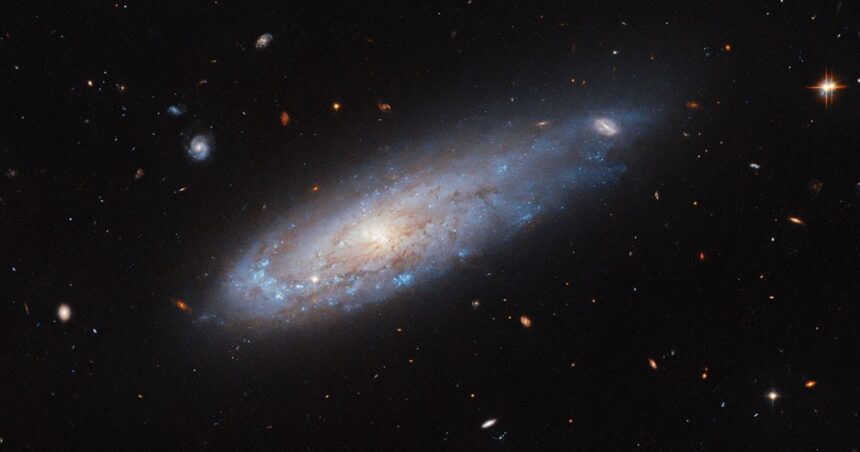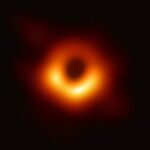Hubble Telescope has continued its legacy; recently, it captured a dynamic image of IC 3225. IC 3225 is a vibrant spiral galaxy racing through the heart of the Virgo cluster, which is located about 100 million light years away from Earth. Hubble’s images show that the IC 3225 galaxy travels at high speed through space and leaves behind a comet-like tail of gas.
IC 3225 is a spiral galaxy that stands out for its motion through the Virgo cluster and the gas tail it leaves behind. This long gas tail is a result of ram pressure stripping, in which gas is forcibly removed from the galaxy due to the dense cluster environment. Due to this, it appears like a cosmic comet speeding through space.
The Virgo cluster is home to various types and sizes and contains over 1,300 galaxies. This is a very large number in one cluster, which leads to high population density. Galaxies within the cluster experience close encounters with each other, leading to complex gravitational interactions.
When galaxies move through clusters like Virgo, they encounter resistance from the intra-cluster medium, which is a rich collection of hot gases and dust known as ram pressure. This resistance forces gas out from the spiral galaxy’s core, leaving a distinct trail and influencing star formation.
Ram Pressure Force That Shaping IC 3225
Ram pressure plays an important role in star formation; it changes how stars form within the galaxy. There is an area of dense arm in the IC 3225 galaxy where gas is compressed. In such an area, ram pressure causes new stars to be born rapidly. Rapidly born new stars are young hot stars that appear blue in colour.
Captured image features the contrast between the spiral galaxy’s two sides. One side shows dense star clusters and hot blue stars, while the other appears elongated, with gas and dust stripped away by the force of ramp pressure, resulting in fewer star formations.
A comet-like tail is aesthetically stunning and provides clues about the galaxy’s past interactions with other galaxies or elements within the Virgo cluster. IC 3225’s journey through the Virgo Cluster represents the cosmic forces that shape galaxies over time.
FAQs
What is the Virgo Cluster?
The Virgo Cluster is a dense grouping of over 1,300 galaxies located approximately 100 million light-years away from Earth, present as an important hub of galactic activity.
How does ram pressure affect a galaxy?
Ram pressure cleans out gas from galaxies as they move through dense mediums, alters star formation rate, and reshapes galaxy structure over time.
Why do some stars in IC 3225 appear blue?
The blue color indicates young, hot stars formed from compressed gas, which shows active star formation in some regions of IC 3225.
Editor’s Recommendations
- Astounding Discovery! Zombie Star Survives the Supernova Explosion
- Hubble Telescope Captures Breathtaking ‘Stellar Volcano’ Eruption
- 1st Triple Black Hole System Found by Chance, But It Challenges the Coventional Black Hole Formation Theories
- Universe Shakedown: What Really Happens When Black Holes Merge?




